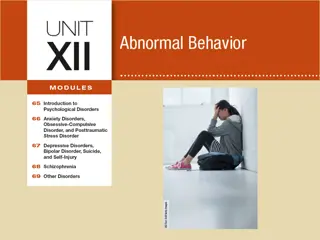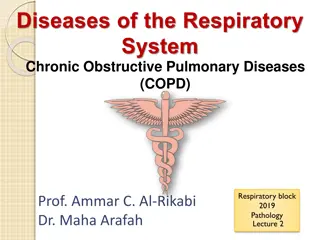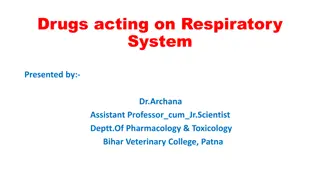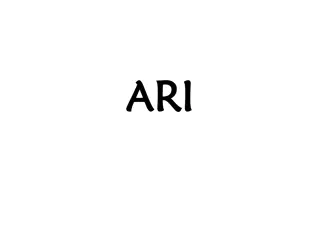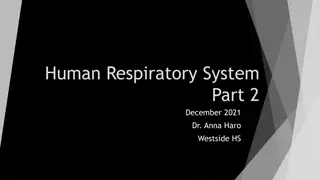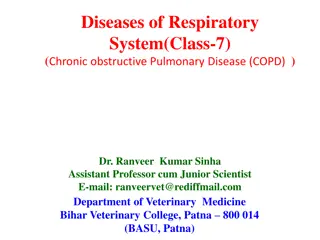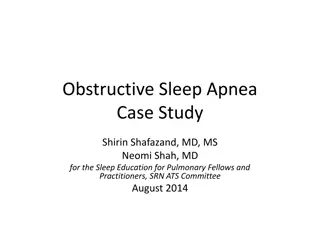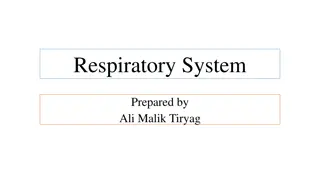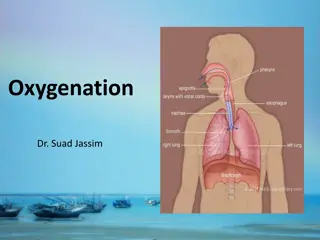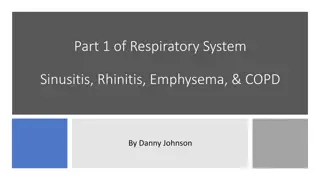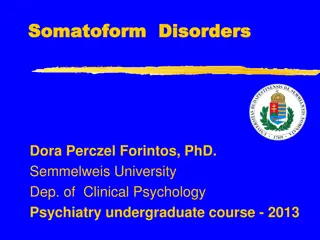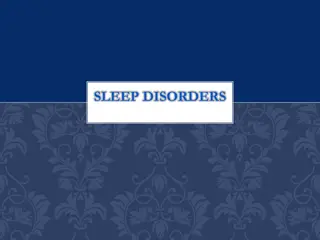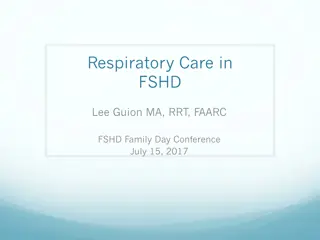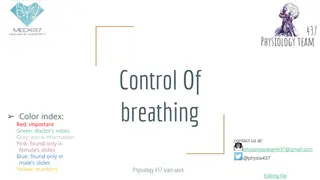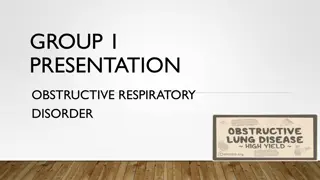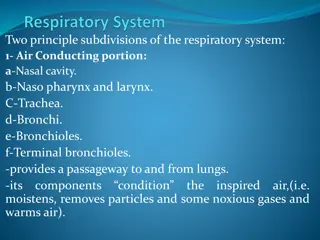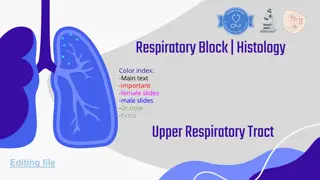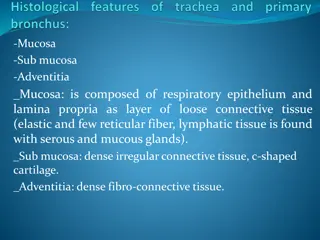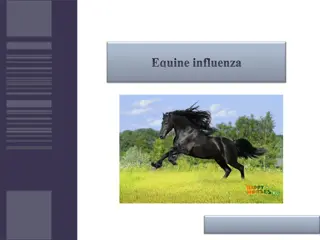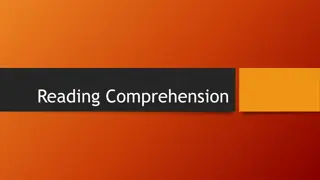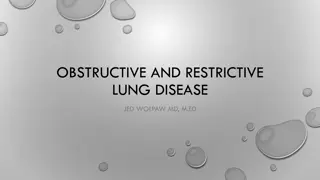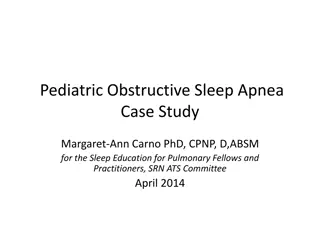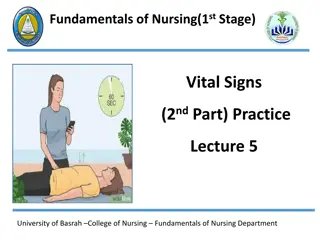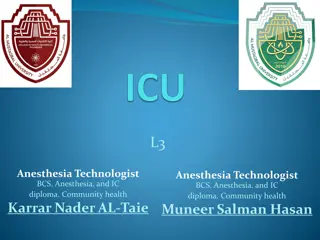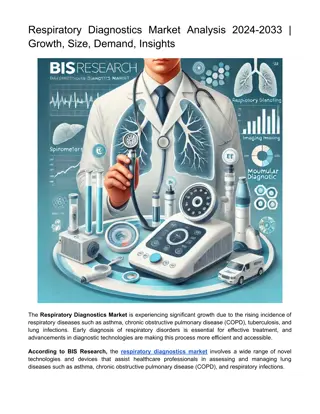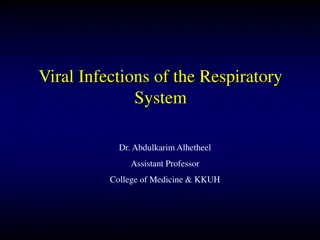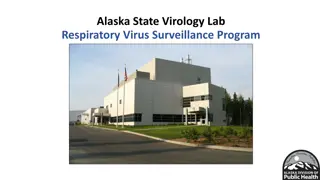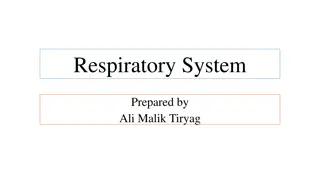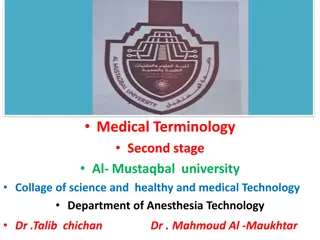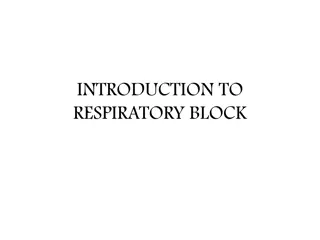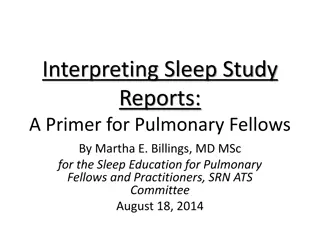The Link Between Sleep and Health_ Exploring Obstructive Sleep Apnea Screening
Everyone needs a good night\u2019s sleep but not everyone gets it. While the general population is generally plagued with various sleep conditions, one of the most common ones is obstructive sleep apnea.
7 views • 4 slides
Anxiety Disorders and Related Conditions
Explore the distinguishing features of anxiety disorders such as generalized anxiety disorder, panic disorder, and phobias, along with insights into obsessive-compulsive disorder (OCD) and posttraumatic stress disorder (PTSD). Delve into the impact of conditioning, cognition, and biology on these co
2 views • 46 slides
Chronic Obstructive Pulmonary Diseases (COPD) and Emphysema
Chronic Obstructive Pulmonary Diseases (COPD) encompass conditions like chronic bronchitis and emphysema, typically caused by factors like cigarette smoking. This presentation delves into the clinical and functional variances between chronic bronchitis and emphysema in COPD patients, along with an e
1 views • 40 slides
Drugs Acting on the Respiratory System for Effective Treatment
Explore the classification and actions of drugs targeting the respiratory system, including antitussives, expectorants, respiratory stimulants, bronchodilators, and mucolytics. Discover how these medications work to suppress coughs, promote fluidity of bronchial secretions, and stimulate respiratory
0 views • 14 slides
Overview of Shock Classifications and Causes
Shock is classified into different types such as Hypovolemic, Cardiogenic, Obstructive, Distributive, and Endocrine shock. Hypovolemic shock results from fluid loss, while Cardiogenic shock is due to heart failure. Obstructive shock occurs from mechanical obstructions, whereas Distributive shock is
1 views • 11 slides
Collaborating to Combat Sepsis: Role of Respiratory Therapists
Sepsis is a critical condition involving infection and inflammation, where the body's response causes widespread symptoms. Learn about the continuum of sepsis, its pathophysiology, and respiratory warning signs. Respiratory therapists play a crucial role in identifying and managing sepsis, with stat
1 views • 14 slides
Acute Respiratory Infections (ARI)
Acute Respiratory Infections (ARI), characterized by sudden onset respiratory symptoms affecting the respiratory system from nose to alveoli, are a complex group of diseases caused by various agents. Symptoms include pain in the sinuses, nasal congestion, fatigue, sinusitis, coughing, and more. The
0 views • 16 slides
The Human Respiratory System: Anatomy, Functions, and Importance
The human respiratory system plays a vital role in gas exchange and maintaining overall health. This article delves into the anatomy of the respiratory system, its main functions, such as gas exchange and air filtration, and the importance of respiratory health. Learn about the different components,
0 views • 13 slides
Chronic Obstructive Pulmonary Disease (COPD) in Horses: A Veterinarian's Perspective
Chronic Obstructive Pulmonary Disease (COPD) in horses is a respiratory condition caused by hypersensitivity reactions to allergens, viral infections, or bronchopneumonia. This chronic respiratory disease leads to decreased work performance, chronic coughing, abnormal lung sounds, and cardiac dysfun
0 views • 17 slides
Respiratory Health Insights and Updates by Dr. Zeina Aoun Bacha, MD
Explore key topics in respiratory health with Dr. Zeina Aoun Bacha, MD, including World Respiratory Diseases Day, Organizing Pneumonia, Sputnik Five Vaccine, and AstraZeneca Vaccine. Stay informed on important respiratory events and vaccination developments.
1 views • 10 slides
Obstructive Sleep Apnea: A Comprehensive Case Study
This case study presents Mr. Simon Applegate, a 55-year-old male experiencing symptoms suggestive of obstructive sleep apnea (OSA). Key aspects include his medical history, physical exam findings, and sleep-related complaints reported by his wife. Important components of a good sleep history, differ
0 views • 15 slides
The Respiratory System: An Overview
The respiratory system, consisting of the upper and lower respiratory tracts, is responsible for ventilation and gas exchange. Learn about the anatomy, common symptoms like dyspnea and cough, and how the system functions anatomically and physiologically. Understanding these aspects can help in recog
0 views • 15 slides
Oxygenation and Respiratory System Function
Explore essential terms like alveoli, perfusion, atelectasis, and more in the context of respiratory system function. Learn about lung anatomy, oxygenation processes, and common respiratory disorders like dyspnea and hypoxia. Discover the crucial factors for maintaining normal respiratory function.
0 views • 35 slides
Respiratory System Disorders: Sinusitis, Rhinitis, Emphysema, and COPD
This informative content delves into common respiratory issues such as sinusitis, rhinitis, emphysema, and COPD. It provides detailed information on the symptoms, diagnostic criteria, and rating formulas for each condition. The content also touches upon military service-related respiratory problems.
0 views • 15 slides
Somatoform Disorders: Symptoms, Diagnosis, and Treatment Options
Somatoform disorders are characterized by physical symptoms that mimic general medical conditions without an underlying medical or mental disorder. Patients often exhibit somatic symptoms without an organic basis, have poor insight, and do not find reassurance helpful. Common types include somatizat
0 views • 46 slides
Sniff Nasal Inspiratory Pressure (SNIP): Assessing Respiratory Muscle Strength
SNIP is a sensitive non-invasive test that measures inspiratory muscle strength by assessing nasal pressures during a sniff maneuver. It is a valuable tool for early detection of respiratory muscle decline, providing insights into potential threats like hypercapnic respiratory failure, impaired coug
0 views • 11 slides
Neonatal Respiratory Support Study Overview
This study focuses on evaluating the primary outcomes of length of hospital stay post-birth and incidence of severe respiratory failure in infants receiving respiratory support. Detailed logs are maintained daily until the infant is off respiratory support or discharged. The study is funded by NIHR.
0 views • 19 slides
Anesthesia and Upper Respiratory Tract Infections in Children
This presentation discusses the etiology, differential diagnoses, and management of upper respiratory tract infections (URIs) in children undergoing anesthesia. It covers causes of bronchoconstriction, adverse respiratory effects of URIs, and current anesthetic recommendations. The content emphasize
0 views • 52 slides
Overview of Common Sleep Disorders and Their Classification
Sleep disorders such as insomnia, restless leg syndrome, obstructive sleep apnea, parasomnias, and narcolepsy are prevalent conditions that affect the quality and pattern of sleep. Insomnia is characterized by difficulty initiating or maintaining sleep and is more common in females and older individ
0 views • 33 slides
Respiratory Care in FSHD: Guidelines and Management Overview
Comprehensive overview of respiratory care in Facioscapulohumeral Muscular Dystrophy (FSHD) based on the American Academy of Neurology guidelines. Covers incidence of respiratory insufficiency, assessment of lung function, treatment options including noninvasive ventilation, and strategies for maint
0 views • 16 slides
The Control of Breathing and Respiratory Rhythm
The content delves into the intricacies of the control of breathing, emphasizing the role of the medulla oblongata in regulating respiratory activity. It explores factors modifying breathing patterns, respiratory consequences of changing PO2, PCO2, and pH, and the functions of central and peripheral
0 views • 16 slides
Pulmonary Emphysema: Symptoms, Causes, and Pathophysiology
Pulmonary emphysema, a type of obstructive respiratory disorder, is a progressive lung disease that affects the air spaces in the lungs. This condition is primarily caused by long-term exposure to irritants like tobacco smoke and air pollution. The damage to the alveoli leads to symptoms such as sho
0 views • 49 slides
The Respiratory System Components and Functions
The respiratory system consists of two primary subdivisions: the Air Conducting portion and the Respiratory portion. The Air Conducting portion includes nasal cavity, naso-pharynx, larynx, trachea, bronchi, bronchioles, and terminal bronchioles, providing a pathway to and from the lungs while condit
0 views • 12 slides
Overview of Respiratory System Components and Functions
The respiratory system consists of vital components like pulmonary compliance and surfactant, crucial for proper lung function. Pulmonary compliance reflects the lung's ease of expansion, influenced by factors like lung elasticity and surface tension. Surfactant, produced by type II alveolar cells,
0 views • 15 slides
Nasal Cavity Histology and Respiratory Structures
The detailed information provided covers the histological structures of the nasal cavity, including the vestibule, respiratory mucosa, nasal septum, olfactory mucosa, and paranasal sinuses. It also delves into the microscopic structures of the wall of the trachea and primary bronchi. The respiratory
0 views • 11 slides
Respiratory Tract Anatomy Overview
The respiratory tract anatomy includes various structures like mucosa, submucosa, and adventitia in the trachea, bronchi, bronchioles, and terminal bronchioles. Each component has specific compositions and functions, ranging from respiratory epithelium to smooth muscle layers. The images provide a v
0 views • 15 slides
Equine Influenza: An Overview of Respiratory Tract Infections in Horses
Equine influenza is a contagious upper respiratory infection in horses caused by influenza viruses. This article covers the anatomy of the equine respiratory tract, signs, diagnosis, treatment, prevention, and prognosis of equine influenza. It also discusses the histological structure of the respira
0 views • 18 slides
Innovative Technology for Diagnosing and Managing Respiratory Diseases
Monash University researchers have developed a groundbreaking non-invasive technology to diagnose and manage respiratory lung diseases, such as cystic fibrosis and lung cancer. The technology, utilizing four-dimensional X-ray velocity imaging, provides high-definition real-time images of airflow in
0 views • 4 slides
Obstructive and Restrictive Lung Diseases
Explore the differences between obstructive and restrictive lung diseases through detailed images and descriptions of upper airway obstructions, intrathoracic versus extrathoracic limitations, and how to interpret flow-volume loops. Learn about common conditions like COPD and asthma affecting inspir
0 views • 36 slides
Pediatric Obstructive Sleep Apnea Case Study: Diagnosis and Management
This case study revolves around a 6-year-old African American male initially diagnosed with asthma but still experiencing persistent snoring, headaches, and restlessness. Through a detailed examination, the healthcare provider explores the possibility of pediatric obstructive sleep apnea (OSA) and d
0 views • 22 slides
Respiratory Rate and Ventilation in Nursing Practice
This lecture focuses on the vital signs related to respiratory rate, emphasizing the three processes of respiration: ventilation, diffusion, and perfusion. Nurses assess ventilation by observing the rate, depth, and rhythm of respiratory movement, crucial in recognizing normal thoracic and abdominal
0 views • 51 slides
Mechanical Ventilation in Anesthesia Technology
Mechanical ventilation plays a crucial role in assisting patients with breathing difficulties by delivering oxygen and removing carbon dioxide. It involves two primary types: Negative Pressure Ventilation (NPV) and Positive Pressure Ventilation (PPV). NPV helps patients with conditions like chronic
0 views • 19 slides
Respiratory Diagnostics Market Analysis 2024-2033
The respiratory diagnostics market involves a wide range of novel technologies and devices that assist healthcare professionals in assessing and managing lung diseases such as asthma, chronic obstructive pulmonary disease (COPD), and respiratory infe
1 views • 3 slides
Viral Infections of the Respiratory System
Respiratory viral infections are common and primarily caused by viruses, leading to morbidity and time off work. They can range from mild upper respiratory tract infections to severe lower respiratory tract infections like pneumonia. Various viruses like influenza, parainfluenza, respiratory syncyti
0 views • 23 slides
Pediatric Respiratory Infections: An Overview of Cases and Physiology
This review delves into selected cases of respiratory infections in children presented by Dr. David L. Smith, focusing on the anatomical and physiological aspects of the pediatric airway and respiratory system. It discusses respiratory failure in infants and small children, metabolic demands, cyanos
0 views • 49 slides
Alaska State Virology Lab Respiratory Virus Surveillance Program
The Alaska State Virology Lab's Respiratory Virus Surveillance Program accepts specimens from across Alaska, ranging from large hospitals to single physician clinics. They collect specimens representing CLI/ILI weekly and are interested in Severe Acute Respiratory Illness samples, among others. The
1 views • 6 slides
The Respiratory System: An Overview
The respiratory system comprises the upper and lower respiratory tracts, responsible for air movement and gas exchange. It relies on the cardiovascular system for proper blood flow. The anatomy involves structures in the upper and lower tracts, with common symptoms like dyspnea and cough indicating
0 views • 20 slides
Respiratory System Terminology and Disorders
Explore the terminology and components of the respiratory system including the upper and lower respiratory tract, respiration process, word roots, and common respiratory disorders. Learn the meanings of terms like apnoea, dyspnoea, pneumonia, and more. Enhance your knowledge of respiratory health an
0 views • 12 slides
Comprehensive Overview of Respiratory Block for Medical Students
This respiratory block introduces students to the anatomy, histology, muscles involved in respiration, embryology, radiological anatomy, and management of respiratory disorders. It covers topics like the nasal cavity, pharynx, larynx, trachea, bronchi, lungs, pleura, bronchial tree, and mediastinum.
0 views • 23 slides
Criteria and Interpretation of Sleep Study Reports
This primer delves into the nuances of obstructive sleep apnea, defining terms like apnea and hypopnea, and discussing the AHI, RDI, and scoring criteria for respiratory events. It explains the significance of PSG in evaluating respiratory data, oximetry results, and EEG data during sleep studies. T
0 views • 23 slides

